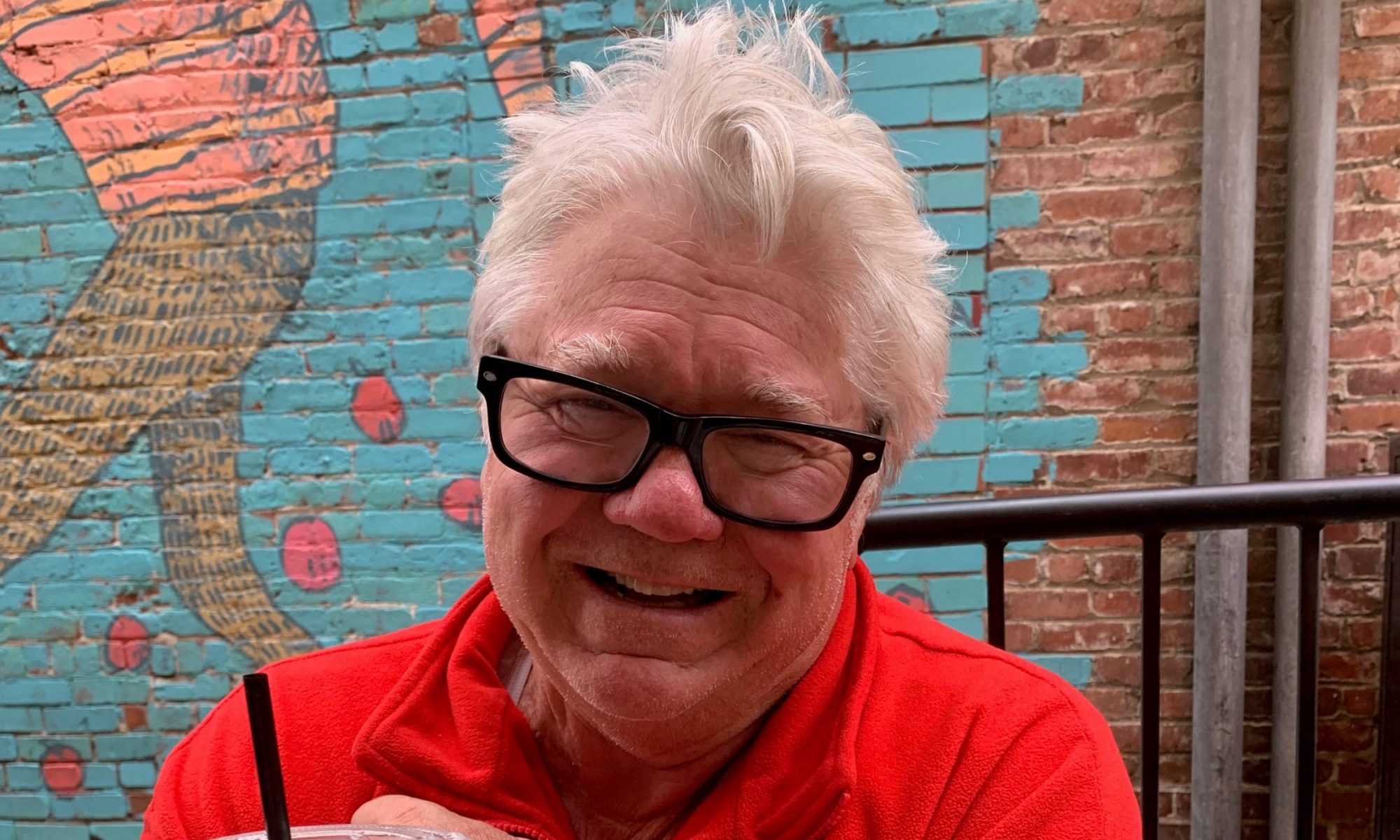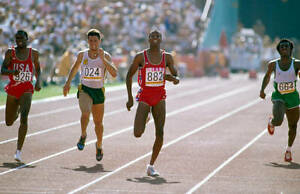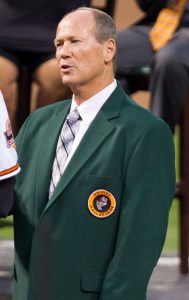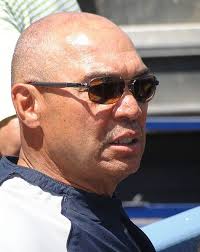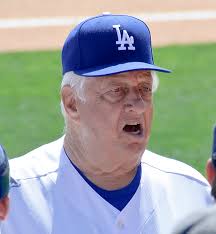A Redlands Connection is a concoction of sports memories emanating from a city that once numbered less than 20,000 people. From pro football’s Super Bowl to Major League Baseball, from dynamic soccer’s World Cup to golf and tennis’ U.S. Open, major auto racing, plus NCAA Final Four connections, Tour de France cycling, more top-flight tennis like Wimbledon, tiny connections to that NBA and a little NHL, major college football, Kentucky Derby, aquatics and Olympic Games, that sparkling little city sits around halfway between Los Angeles and Palm Springs on Interstate 10. In this story, perhaps Redlands is getting its biggest headline off this brilliant basketball connection. – Obrey Brown.
Final Four appearances. There was 1948 and 1951 at Kansas State. Again in 1961 and 1966 at Utah.
In looking ahead to “Black” Jack Gardner’s career, consider that he coached against the likes of North Carolina’s Dean Smith and UCLA’s John Wooden, Kentucky’s Adolph Rupp and Kansas’ Forrest “Phog” Allen, plus both McGuires – South Carolina’s Frank and Al of Marquette.
Gardner’s Utah team went up against Russell’s University of San Francisco in 1955. Truth is, that wasn’t a season when he led one of his teams to a Final Four.

REAL REASON FOR
KANSAS STATE’S LOSS
Gardner, upended by Rupp in ’51, nearly squared off against him in ’66 when Texas Western hit stride, inspiring that future 2006 movie “Glory Road.”
In that movie, Rupp was portrayed by Academy Award winner Jon Voight. Don Haskins, Texas Western’s coach, was played by Josh Lucas. Tons of actors portrayed various roles – reporters, rival players, boosters, racists, students, you name it. There were no roles to depict Gardner.
As for Utah, there was a consolation game in those days. After losing to third-ranked Texas Western, those unranked Utes lost to second-ranked Duke, 79-77, capping its 21-8 season. None of that was portrayed in “Glory Road.”
In 1966, after Utah beat Oregon State, 70-64, “Black” Jack’s Utes found themselves up against that rather historical team – Texas Western University, later known as Texas-El Paso. In “Glory Road,” its story focused on Haskins’ decision to lead an all-black team into that 1966 Texas Western season.
Utah’s 6-foot-7 Jerry Chambers, who scored 28.7 points that season, was selected as that year’s Final Four Most Outstanding Player despite losing, 85-78, to Rupp’s Kentucky. “Black” Jack’s role in that movie was curiously absent. Chambers? He had 38 points in Utah’s loss to Kentucky. No one took him to a “Glory Road” film role, either.
Chambers? Drafted by Los Angeles, then traded with guard Archie Clark and center Darrell Imhoff to Philadelphia in return for none other than Wilt Chamberlain.
Haskins, meanwhile, may have changed basketball, but Gardner’s career seemed far deeper.
“I still put Jack Gardner in the top five coaches all-time,” Haskins said years later. “He deserves everything they’re giving him.”
Five days after Haskins’ chat, Gardner was scheduled to be inducted into Western Athletic Conference’s Hall of Fame.
GARDNER TOOK ON COLLEGE HOOPS’ BIGGEST NAMES
Marquette’s legendary coach, Al McGuire, brought his team into Madison Square Garden (N.Y.) to beat “Black” Jack’s Utes by 20 at that 1970 National Invitational Tournament. Marquette capped a 24-3 season with that title. A 24-3 team? NIT? Remember, NCAA tournaments had recently expanded to 32 teams a year earlier.
Gardner’s final career coaching game was a loss – by 11 points. Against rival BYU.

Speaking of North Carolina. In 1956-57, Frank McGuire’s unbeaten Tar Heels beat Utah in December 1956 by 21 points en route to their own NCAA championship a couple months later.
That was a crazy tournament in which North Carolina beat No. 11 Michigan in a semifinals showdown before knocking off Wilt Chamberlain’s Kansas team in that season’s title game – both triple overtime victories.
“I watched all those games,” Gardner recalled, chuckling. “I won’t say it. I won’t say if we could’ve beaten Kansas, Wilt’s team. I just won’t get into it.”
Utah?
Between that Salt Lake City team, plus Logan’s Utah State and Provo’s Brigham Young University, there were plenty of hotly-contested duels. There were huge duels among those teams from that state.
That must’ve been a nice win for No. 5 Utah when it outdueled No. 8 Utah State, 77-75, on Feb. 27, 1960 in far northern Logan. Aggies’ coach Cecil Baker had a 24-5 team that season while Gardner’s squad finished 26-3.
In 1962-63, Cal-Berkley tagged Utah, 72-66, in that season opener at Berkeley’s Harmon Gym. On that Golden Bears’ team was another Redlands product, Danny Wolthers, who averaged 6.7 points.
“Barely remember him,” said “Black” Jack. “No, I had no idea he went to that same high school I was at. Sounds good to hear, though.”
In 1964, Utah knocked off Cal-Berkeley by 25 points. Wolthers averaged 17.7 points. A few years earlier when he was in high school, Wolthers played for coach Jerry Tarkanian while both were at Redlands High.
Tark The Shark was coaching that high school team while earning his Master’s degree at The University of Redlands.
No. There was never a collegiate matchup with “Black” Jack and “Tark The Shark,” that ex-Terrier coach who took a similar pathway to major colleges as Gardner – through junior college ranks, namely Riverside and Pasadena. Tarkanian wound up at Long Beach State during Gardner’s final years in Salt Lake City.

Long Beach State never played Utah during that five-year span.
Tark, though, might have learned something. He eventually coached a Nevada-Las Vegas team known as the Runnin’ Rebels – fast break points, all-out running throughout 40 minutes of any game.
Did he learn that approach from “The Fox?”
In 1965-66, one in which Utah reached that season’s Final Four, the Runnin’ Utes won games 121-71 over Montana State, 113-81 over Loyola-Marymount, 108-57 against Air Force, 102-83 over Arizona State, 127-88 against Utah State, 107-103 over Wyoming, losing 115-100 in regular season finale at second place BYU, plus handfuls of other high-scoring games.
Yes, they were known as the Runnin’ Utes, a decade, or so before Tark The Shark’s Runnin’ Rebels started cracking away.
“Sure, we met … Tark … good guy … good coach … a few times,” said Gardner. “Great man, great coach. Did he pick up anything from me? It’s hard to say, but sure, I think he couldn’t wait to get into any team with speed and quickness.”
“The Fox” had quite a career. Even Sports Illustrated got into a mix on Gardner.
That magazine once wrote that “he could win with an old maid on the post and four midgets.”
A proponent of fundamental basketball, Gardner was an expert in fast break basketball. His Utah teams were accordingly known as the Runnin’ Redskins, later the Runnin’ Utes.
Part 3 next.
